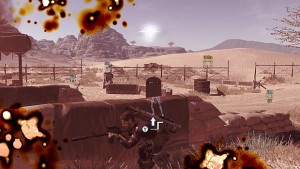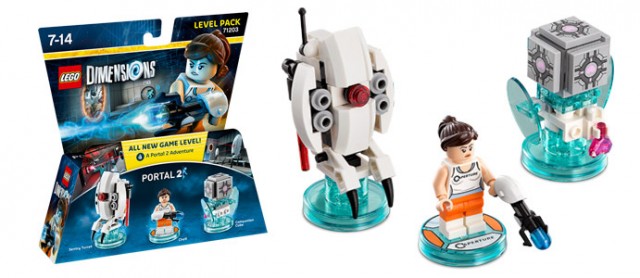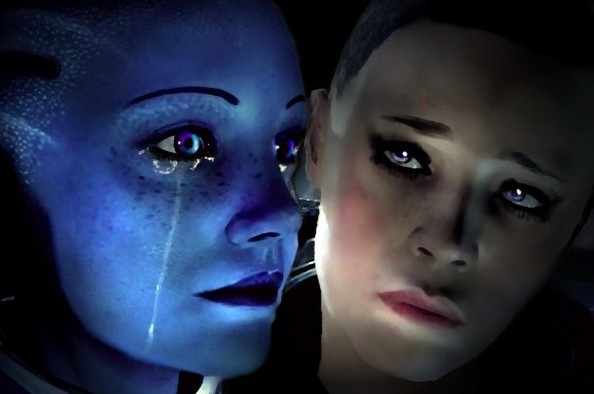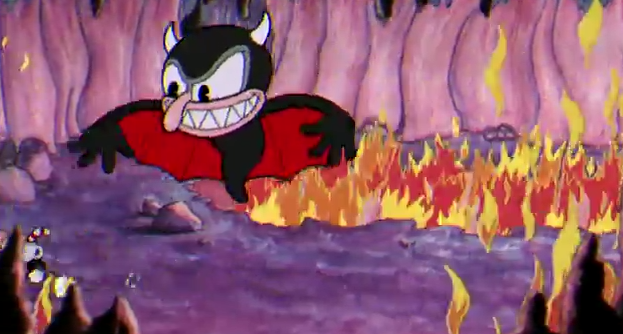Recently, I wrote about the presentation of illness and injury in The Flame in the Flood, and as I’ve played more of that game, I found myself thinking about the visuals of effort. In some games, you can run forever, no matter how many dozens of pounds of gear you’re hauling around. Your avatar never slows, but keeps a steady gait. If they get hurt, maybe a life bar on the HUD changes, but the avatar doesn’t. Or maybe blood appears on clothing; maybe they limp. But often, there’s nothing. When the life bar empties, the avatar drops, with no visible signs of effort having been exerted, or the effects of injury.
Conversely, other games take careful steps to demonstrate effort. I remember, many years ago, playing Bushido Blade with a friend; we would purposely aim for one anothers’ legs because then the avatars would drop to one knee, fighting that way. We found it hilarious, not because it looked realistic, but because it was funny. But we were young and stupid; we didn’t even really notice just how realistic Bushido Blade was compared to other fighting games. No life bar, just impact: hit an arm, and it becomes useless. You know, as arms do. And it made us better, more careful, more cognizant, even while we were laughing.
There are manifest signs of effort like this in an unusual variety of games. When I pick up Unravel, I see a completely different take on demonstrations of effort: Yarny gets smaller as he goes further, as he runs out of yarn. In fact, this is part of the central conceit of the game. His little body diminishes onscreen with every step. In its way, this is very realistic (despite being a game about a magical yarn guy): yarn is finite. Skeins run out.
Sometimes, when my onscreen avatar in a game gets tired after running long distances, and begins to stagger, I get frustrated. As a player, I have goals—places to be, things to do, achievements to unlock. I don’t want to have to deal with some bullshit animation just added for flavor! Except it’s never just flavor. Staggering and slowed movement means you’re more vulnerable; the zombies might catch you, the bad guys, the police, whomever or whatever it is that’s after you (there’s almost always something after you) now has an advantage. You must change your strategy. In Unravel, you have to look for more yarn. In The Flame in the Flood, you must balance your health and well-being. In a game like State of Decay, you must keep an eye on your stamina. After all, swinging a mace wears one down after a while, no matter how athletic or well trained.
 Frustrating as these changes in character may be at times, our thinking shifts with them. A change in gait or appearance is a visual cue, clueing us in that it’s time to alter strategy. In games without stamina measures, necessarily, there may be other cues; in Metal Gear Solid V, for instance, the screen begins to darken; your energy is burning away, your oxygen depleting, however you might describe it, things are getting bad for you out there. But this also creates a separation between player and avatar. Snake doesn’t necessarily show injury or effort; while he may be covered with blood from previous injuries, it doesn’t always correlate to the present. It’s the player’s “consciousness” that is fading, and it’s a cue that it’s time to shift gears, because whatever the player’s doing isn’t quite working. In other words, it’s not Snake. It’s you. And it’s a reminder that you, a player, are in control.
Frustrating as these changes in character may be at times, our thinking shifts with them. A change in gait or appearance is a visual cue, clueing us in that it’s time to alter strategy. In games without stamina measures, necessarily, there may be other cues; in Metal Gear Solid V, for instance, the screen begins to darken; your energy is burning away, your oxygen depleting, however you might describe it, things are getting bad for you out there. But this also creates a separation between player and avatar. Snake doesn’t necessarily show injury or effort; while he may be covered with blood from previous injuries, it doesn’t always correlate to the present. It’s the player’s “consciousness” that is fading, and it’s a cue that it’s time to shift gears, because whatever the player’s doing isn’t quite working. In other words, it’s not Snake. It’s you. And it’s a reminder that you, a player, are in control.
But when the avatar demonstrates in some way the injury or effort, by staggering, growing smaller, slowing down, etc., that action stays onscreen. Sure, the player might be reading a HUD, a player-only cue, but the avatar is also changing—suffering, to put it bluntly, with no visual cue to separate the player what’s happening onscreen.
I wonder how this might impact gameplay, if we feel in some ways more connected, and less likely to take risks, when we see our avatars torn up and battered, or if it doesn’t matter much at all. Perhaps it depends on the player, or on the nature of the game. The Flame in the Flood, as I mentioned, would be an entirely different experience without those very clear visual cues. A broken leg means Scout is slowed, limping, and I feel it. With Unravel, Yarny’s eternal hunt for more yarn is a major mechanic, and could be even if he didn’t necessarily shrink before our eyes—the finite quality of yarn, after all, is just part of the puzzles—but would it feel as immediate? If we weren’t watching, calculating, wondering how much further we could go? Seeing Yarny grow smaller worries me. It makes the puzzles harder, in a sense (I’m anxious about that little guy!), but also makes me more determined. On the other hand, in MGSV, the only thing that stops me when I’m getting hurt is how much I’ll have to redo if I’m killed. Is it worth it? Do I care? I’m not particularly concerned about Snake’s well-being, but I can’t say for sure if that’s just because of the visual presentation, or because the Metal Gear series is so over-the-top regardless that a part of me doesn’t quite take it seriously. Metal Gear is a series of sprawling films that I sometimes control, wild western-influenced techno-thrillers with all sorts of wacky shit going on, and while sometimes I care about the moments and the characters and developments, I’m not sure how much I care. In The Flame in the Flood, I care a lot—not just because I might have to bounce back to a previous save or checkpoint, but because I don’t like to see Scout suffer.
Of the games I’ve mentioned here, though, Metal Gear Solid V has the most realistic graphics and presentation, yet I care about it the least. Don’t Starve, however, has a similar approach to character suffering: despite the third-person presentation, it’s the screen and HUD that changes as characters begin to suffer. I mention this because I care deeply about my Don’t Starve characters; suffering begins to induce a level of panic often reserved for small kitchen fires and spilled beverages. Nearing death means it’s time for immediate action. But it’s not that I feel particularly attached to my avatar in Don’t Starve. I just prefer to win, and by definition, starving is losing. If the screen starts to darken, or my little stomach icon begins to shrink, I strategize, but it’s all separate thinking, planning, a game of chess with myself and the system, never, “Oh no, Wilson!” And maybe Wilson isn’t a young woman with a dog or an adorably magic yarn dude, but he’s got great hair and can grow a sweet beard, so shouldn’t I care about him as more than than a simple extension of my mouse and keyboard, the system I use for picking grass and trapping bunnies?
Maybe I should, but I don’t. And I wonder now if maybe that visual separation between player and avatar is part of the reason why.




